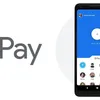Google acquires no-code app development platform AppSheet
The acquisition will help enterprises empower millions of citizen developers to easily create and extend applications without the need for professional coding skills
Google has acquired AppSheet, a no-code application development platform, for an undisclosed amount.
With this acquisition, customers will be able to develop richer applications at scale that leverage not only Google Sheets and Forms, which are already popular with customers, but other top Google technologies like Android, Maps, and Google Analytics, Google said in a blogpost.
"This acquisition helps enterprises empower millions of citizen developers to more easily create and extend applications without the need for professional coding skills," it added.

AppSheet complements Google Cloud's strategy to re-imagine the application development space with a platform that helps enterprises innovate with no-code development, workflow automation, application integration, and API management as they modernise their business processes in the cloud, it said.
AppSheet's ability to power a range of applications, combined with Google Cloud's deep expertise in key verticals, will further enable digital transformation across industries like financial services, manufacturing, retail, healthcare, communication, and media and entertainment, the blog noted.
AppSheet CEO Praveen Seshadri, in a separate blog, said the team is joining Google Cloud and will continue to run the service.
"We can now deliver a better platform for our customers and reach and empower many more users," he added.
Earlier this month, Google announced it is putting an end to the tracking of third-party cookies on Google Chrome, which is the tech giant's largest technology used for targeted advertising. This move comes after Apple discarded it many years ago and as a response to the current heat around the future of user privacy and prospective cyber threats.
Cookies are essentially pieces of data that a user's device and their web browser stores internally after they browse through a website. Assuming that a user browses through Amazon on a web browser, the website leaves traces of data like the items in the cart, login credentials, pages visited, items viewed, etc. These traces left by Amazon are called first-party cookies, which are a reflection of how the website tracks the users. Third-party cookies are those generated by another player that is not the website browsed or the user, but advertisers who promote their companies and products through ads on the webpage.
Most users tend to overlook these advertisements and yet get traced and tracked by the advertisers, who in turn generate a user profile. This profile will have the user's entire browsing history, which gives the advertisers a leverage to target the user with the products they might like to explore.
According to Statista, Google Chrome, Google's flagship product in web browsing, has captured a market share of 63.62 percent in the web browsing category across the world as of September 2019. Apple's browser Safari stands at 17.68 percent while Mozilla Firefox captures 4.39 percent.
(Disclaimer: Additional background information has been added to this PTI copy for context)









